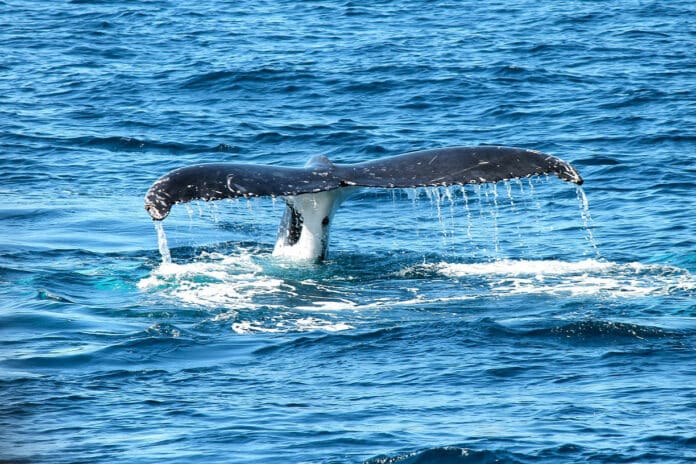Global ocean temperatures are rising quickly, which is affecting marine ecosystems. But little is known about how blue whales adapt to these shifting habitats, particularly those in the Southern Hemisphere. This is to establish whether blue whales react to environmental variability over a long period.
Using over 16 years of passive acoustic data recorded at Cape Leeuwin, researchers from UNSW Sydney have investigated whether oceanic environmental drivers are correlated with the migration patterns of eastern Indian Ocean (EIO) pygmy blue whales off Western Australia.
Researchers used a network of underwater listening devices to keep tabs on pygmy blue whales off the coast of Western Australia. Their recordings could offer clues on whether their calls correspond with environmental changes.
They discovered that although the number of whale sound detections varied from year to year, the variability was connected to the climate phenomenon known as La Nia. The findings imply that climate cycles may affect pygmy blue whale migration in the eastern Indian Ocean, which may have significant conservation implications.
La Nia is the cooling phase of the El Nio-Southern Oscillation (ENSO) cycle. This naturally occurring oscillation affects weather and ocean conditions globally, including those in the Indian Ocean. It produces variations in sea surface temperatures across the Pacific.
Gary Truong, lead author of the study and a Ph.D. candidate at UNSW Science, said, “We found the number of detections was related to the strength and timing of La Niña events, suggesting it may be an important factor influencing their movements.”
“More specifically, we found the number of song detections during La Niña years to be up to 10 times more than those in El Nino or neutral years, which indicates these whales respond to changes in climate cycles.”
The Comprehensive Nuclear-Test-Ban Treaty Organisation (CTBTO) established a network of underwater sensors in the Indian Ocean to collect acoustic data for the study. The so-called hydrophones were first intended to detect unauthorized nuclear tests. However, they also can capture the noises of aquatic animals, such pygmy blue whales.
Mr. Truong says, “The song of the whale is a very low-frequency range these underwater listening devices pick up. Their sounds are usually between zero to 100 hertz, which is lower than we can detect with our ears.”
The smallest subspecies of blue whales, known as acoustic pygmy blue whales, are thought to have ten different populations in the Southern Hemisphere. These populations can be distinguished from one another by the noises they make. While it is believed that only male whales can sing, scientists can examine the songs to deduce details about populations and migration patterns.
Mr. Truong says, “More pygmy blue whale calls might indicate the whales are migrating in greater numbers and having more reproductive success. Now that we’re out of La Niña, the number of calls we detect may decline, which could mean a period where the whales may not be as productive.”
Hunting once drove the species to the edge of extinction. While they are now recovering slowly, their numbers haven’t bounced back strongly,” says Professor Tracey Rogers, senior author of the study and an ecologist from UNSW Science.
“From a conservation perspective, they are considered data deficient because we know relatively little about them, which is why studies like these are important.”
More information about the whale’s movements can help managers predict when more whales will migrate and help other ocean users to plan their activities.
“Commercial shipping and looking for oil and gas can be detrimental to the whales when they are present,” Mr. Troung says. “Managing those activities, particularly over the more active migration years, can help reduce the impact on these animals as they swim past.”
While they’re no longer in decline, the researchers say climate change also looms as a growing threat to the blue whales. As the ocean warms, it could change the availability of food sources such as krill, which the researchers suspect may be the main driver behind whether the whales undertake migration.
“Not only are we seeing the impacts of climate change on the terrestrial landscape, but also on the oceans and the animals within them,” Prof. Rogers says. “The science suggests we will see more frequent La Niña events. This will likely affect food availability for these large whales and perhaps put more stress on recovering population.”
Journal Reference:
- Gary Truong and Tracey Rogers. La Niña conditions influence interannual call detections of pygmy blue whales in the eastern Indian Ocean. Frontiers in Marine Science. DOI: 10.3389/fmars.2022.850162
